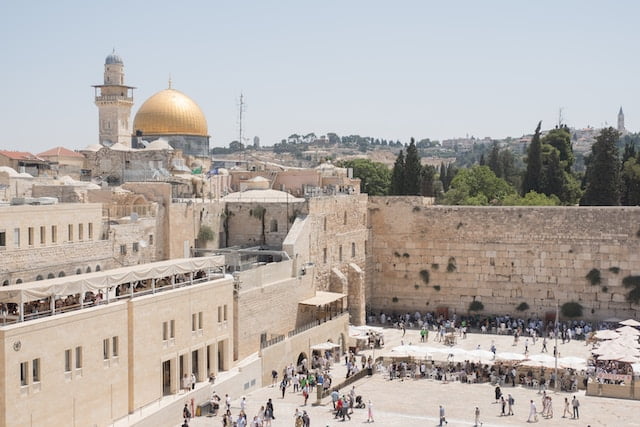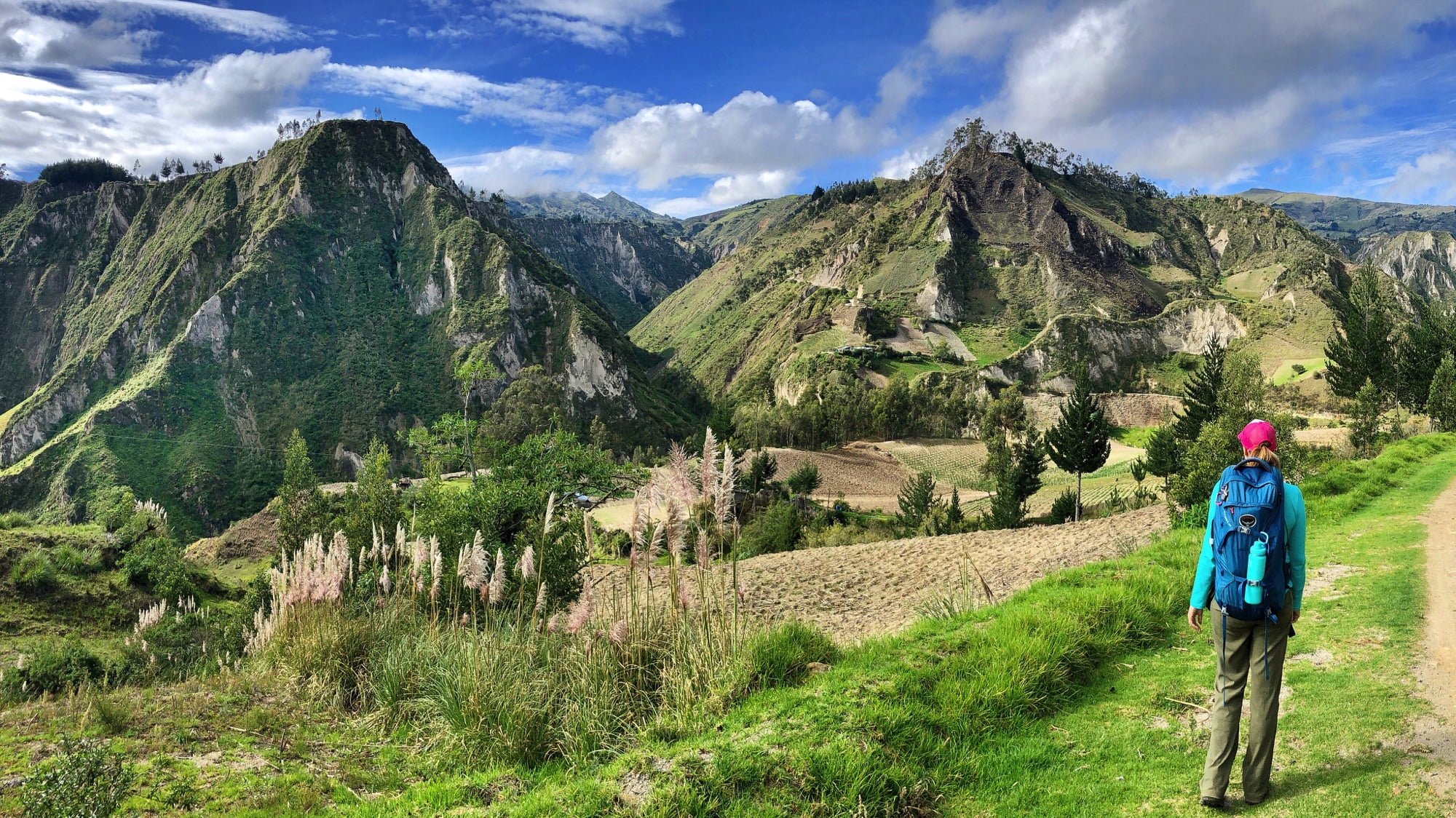
Jerusalem Old City, a place where every stone tells a story, is a melting pot of cultures, religions, and histories, making it a must-visit destination for travelers around the world. Stepping through the ancient gates into Jerusalem’s Old City is like traveling back in time. Within the weathered stone walls lies a labyrinth of narrow alleyways, colorful bustling markets, sacred shrines and historic sites that have incredible meaning for Jews, Christians and Muslims.
As the spiritual heart of the Holy Land, the Old City packs some of the world’s most significant religious sites into an area of less than one square kilometer. You’ll want to spend at least a full day immersing yourself in the magical atmosphere, but to fully experience all the major highlights, joining a guided tour is highly recommended.
The Old City is divided into four quarters – Jewish, Muslim, Christian and Armenian. Each has its own fascinating sights, sounds and aromas that give a glimpse into the diverse cultures and traditions of the people who call this ancient place home.
Here are the top things to see and do to make the most of your visit:
The Western Wall
For Jews, the Western Wall is the holiest place where they can pray, located in the Old City’s Jewish Quarter. Also known as the Wailing Wall, it’s the only remnant of the Second Temple compound built by King Herod in 19 BCE and destroyed by the Romans in 70 CE.
The enormous stone wall is an impressive sight as it towers above the crowds of people who gather here daily to pray and recite psalms, swaying back and forth, many inserting written prayers into cracks between the stones. Both men and women are welcome to pray at the wall but there are separate sections designated for each gender.
The Western Wall Tunnels
Extending along the Western Wall are hidden underground tunnels that allow you to walk beneath the streets of today’s Old City. On this tour, you’ll see massive stone building blocks, water cisterns, and other archaeological discoveries that were uncovered when the tunnels were excavated.
One of the most impressive sites is Warren’s Gate, one of the Western Wall’s largest stones located closest to where the Jewish Temple’s Holy of Holies once stood. Walking along these ancient tunnel passageways is an amazing experience that provides insight into Jerusalem’s fascinating history.
Witness the Dome of the Rock
One of Jerusalem’s most distinctive landmarks is the gold-capped Dome of the Rock shrine that rises above the Old City skyline. The Islamic house of worship was built between 685 and 691 CE under the Umayyad caliph Abd al-Malik on the rocky outcropping known as Mount Moriah that today forms the Temple Mount complex.
The octagonal blue and green tiled sanctuary protects the Foundation Stone, considered a holy site in Judaism and Islam. Though non-Muslims cannot enter the Dome of the Rock itself, visitors can still admire its dazzling Byzantine mosaics and stunning architecture from the outside.
The Church of the Holy Sepulchre
One of Christianity’s most sacred places is within the Church of the Holy Sepulchre located in the Christian Quarter. The church was built in the 4th century by Emperor Constantine over what was believed to be the sites of Jesus’s crucifixion and burial.
Today, the church is shared by multiple Christian denominations including Roman Catholics, Greek Orthodox, Armenian Orthodox, Egyptian Copts and more. Pilgrims come to touch the Stone of Unction where it’s said Jesus’ body was prepared for burial. You can also ascend the steep staircase to see the hill of Calvary where the crucifixion took place.
Stroll Through the Cardo
The Cardo is the partially restored main street of Jerusalem that runs through the Jewish Quarter from north to south. Dating back to Roman times, the broad Colonnade-lined avenue was once the heart of the city during the 6th century Byzantine era.
Take an inspiring walk down the length of the Cardo, passing crumbled pillars, ruined walls and merchant stalls much like in ancient times. Note the incredible mosaics that have been uncovered in the old shops along the pedestrian road. Don’t miss the displayed Byzantine era pillar mile markers.
Shop in the Bustling Markets
For many visitors, one of the best ways to soak up the vibrant atmosphere in the Old City is by browsing through the crowded bazaars.
The Muslim Quarter is home to the frenetic overflowing Shuk, also known as the Bazaar of Jerusalem. Here amid narrow cobblestone walkways you’ll find shop owners loudly hawking everything from fresh produce, spices and baked goods to hookah pipes, jewelry, clothing and souvenirs. Bargaining is expected so practice your negotiation skills and you might get some good deals.
Nearby in the Christian Quarter is the Souq Khan el Zeit, specializing in olive wood carvings. The Armenian Quarter also has some small shops and stalls mixed in with its historic churches.
Taste the Local Cuisine
After all that walking and sightseeing you’ll probably have worked up an appetite. The Old City offers plenty of eateries to choose from when you’re ready for a good meal.
For traditional Middle Eastern fare like hummus, falafel, kebabs and more, casual restaurants can be found Everywhere. Stop at one of the small stalls for a quick felafel or shawarma wrap to eat on the go.
The Jewish Quarter has Kosher restaurants along with European-style cafes. Try some soul-warming chicken soup with matzo balls or sample sweet rugelach pastries filled with chocolate or raisins. Armenian restaurants serve specialties like lahmajun meat pizzas and kebabs.
Jerusalem Old City Hotels
For travelers seeking a place to stay, Jerusalem offers a range of hotels close to both the Old City and the modern New City, providing convenient access to major tourist attractions and historical sites. These hotels offer excellent amenities and world-class service, ensuring a comfortable and memorable stay for those exploring the rich history and vibrant culture of Jerusalem.
Some of the hotels in Jerusalem near the old city include luxury brands with iconic history, such as the King David Hotel. This stately 1930s era hotel provides pampering service and romantic old world charm. Its prestigious Heritage Building overlooks the walls of the Old City.
Boutique hotels in restored ancient buildings offer intimate ambiance and Old City views from their terraces. Some have rooftop restaurants perfect for dining while surveying the domes and spires of sacred shrines. Quaint guesthouses and inns provide affordable character in the Christian Quarter.
Carefully read Jerusalem hotel reviews on trusted travel sites to choose the perfect place for your budget and style. Look for special packages that include breakfast, airport transfers, spa credits or other perks.
With so many full-service hotels minutes from ancient holy shrines and sacred sites, visitors can easily explore major attractions from morning till night. Staying so close allows you to witness the magic of the Old City at different times of day and drop in quickly between busy sightseeing adventures.
When to Visit the Old City of Jerusalem
One of the most comfortable times of year to visit Jerusalem is in the spring (March to May) when the weather is mild and sunny. Crowds also tend to be smaller than the busy summer travel season.
Fall (September to November) is another lovely time with comfortable daytime temperatures for walking around. Early December brings festive lights and holiday energy.
July and August heat can be intense, but that’s offset by summer vacation bringing lots of energy and events. Winters are chilly but fine for sightseeing if you dress warmly for the cooler temps.
Jewish holidays like Passover, Rosh Hashanah, Sukkot, and Hanukkah celebrate at the Western Wall. The Easter Holy Week draws Christian pilgrims. Ramadan brings a festive atmosphere to the Muslim Quarter. Whenever you visit, the magical Old City of Jerusalem awaits!

